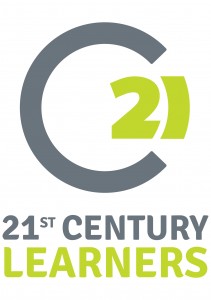
What is Thinking Together?
Thinking Together is a dialogue-based approach to the development of talk to support learning within the normal school curriculum and was originally developed by Professor Neil Mercer, Dr Lyn Dawes and Professor Rupert Wegerif in the 1990s. The central idea is the use of a set of co-constructed ‘ground-rules‘ to guide students towards talk that is ‘exploratory‘ (defined on the University of Cambridge website as talk that emphasises reasoning, the sharing of relevant knowledge and a commitment to collaborative endeavour). The ground-rules also support reflection on the quality of talk (and hence metacognition) as a driver of sustained improvement.
It might be argued that any dialogue is an act of thinking together. If a group of people are talking together about a problem, one participant might offer a suggestion about a way forward. Another might ask for some evidence that the suggested approach would be effective, perhaps through an example of how it might work. A third might challenge the suggestion, giving an example of a situation in which it would be ineffective. These are all moves of thinking that could be made by one individual, but in this case are being made collaboratively: the group are thinking together (Russian psychologist Lev Vygotsky might suggest that learning how to think together, using spoken language, is a precursor to learning how to think effectively as an individual).
But effective thinking together is harder than we might imagine, and examples of dialogue and exploratory talk in schools are relatively uncommon; this is why Wegerif, Mercer and Dawes first developed Thinking Together as an intervention aimed at increasing the effectiveness of small group talk. You can find out all about their work here.
In recent years Dr Neil Phillipson has written about the Thinking Together approach with Rupert Wegerif, now Professor of Education at Cambridge University (see this book, for example). Neil’s practice is based on the core ideas of the original Thinking Together project, and complemented by aspects of practice in Philosophy for Children (P4C). The practice is applied to whole-class as well as small group talk, and as such training includes guidance for teachers on the facilitation of classroom dialogue and on how to judge when using a dialogic approach is beneficial.
Why use Thinking Together?
Effective teaching requires a range of ‘communicative approaches’ or talk-types. A legitimate part of a teacher’s job is to transmit information to students through exposition or ‘telling’. However, this is not sufficient to ensure understanding. The learner needs to be actively involved in making ‘meaning’ of the new information, which involves a collaborative process of questioning, answering, explaining, exemplifying, comparing, connecting, applying, evaluating, and so on. In other words, the opportunity to engage in dialogue is an essential part of the development of understanding. This also allows the teacher to ‘see’ what understandings have been constructed from the information that has been transmitted, and to respond accordingly in a dynamic form of assessment for learning. (See this discussion of The Importance of Dialogue for more information).
It is important to create opportunities for small-group and whole class dialogue within a teaching and learning sequence. However, there is much evidence to suggest that classroom talk that might be labelled as dialogue is rare, and that much classroom talk is ineffective – hence the need for an intervention such as Thinking Together.
Evidence of the impact of the original Thinking Together project can be found here. These evaluations show that significant improvements can be achieved in curriculum areas and also in reasoning test results. In further evidence of the impact of classroom dialogue, Christine Howe, Sarah Hennessy and Neil Mercer have recently shown a correlation between aspects of pupil-teacher dialogue and attainment in Key-Stage 2 SATs tests in England. You can read about their work here. The Education Endowment Foundation (EEF) have carried out research into the effectiveness of Professor Robin Alexander’s approach to dialogic teaching, with promising results which further emphasise the benefits of dialogue in the classroom. You can read the report here.
Thinking Together, Philosophy for Children and Thinking Moves A-Z are approaches that can be used independently, but they also work beautifully together. If you already practice P4C, you will find that aspects of the Thinking Together training support the spread of quality dialogue out of the Community of Enquiry and into the wider curriculum. The use of Thinking Moves A-Z with Thinking Together will improve teachers’ and students’ questioning and lead to richer dialogue and more effective metacognition.
What CPD and Support is Available?
Training in Thinking Together can be delivered in a single day or as a series of three 90 minute sessions (face-to-face or online). The training can be followed by support days to develop an implementation plan, to model introductory sessions and to support teachers in classrooms. Introductory staff meetings can also be arranged. Contact Neil@21stcenturylearners.org.uk to discuss your needs.


